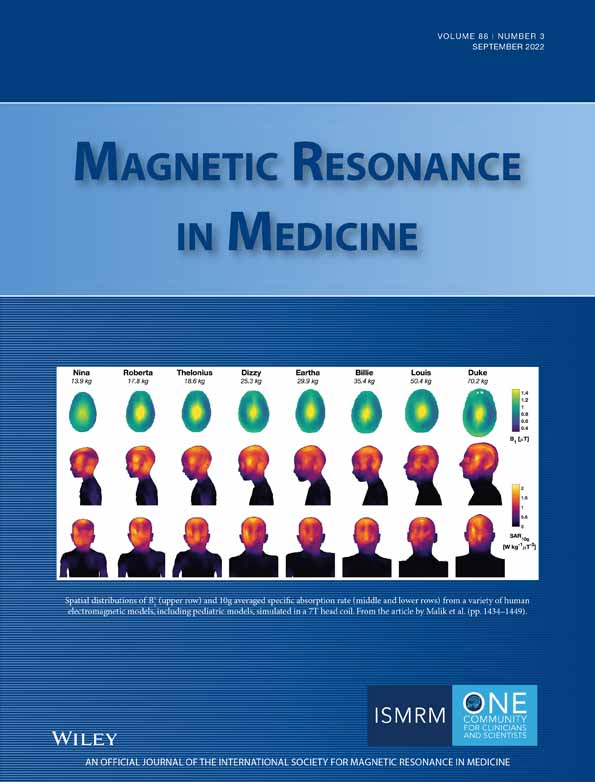A k-space-based method to measure and correct for temporal B0 field variations in MR temperature imaging
Funding information: National Institutes of Health (R01EB028316, R37CA224141, and R03EB029204) and the Mark H. Huntsman Endowed Chair. The content is solely the responsibility of the authors and does not necessarily represent the official views of the National Institutes of Health
Click here for author-reader discussions
Abstract
Purpose
Present a method to use change in phase in repeated Cartesian k-space measurements to monitor the change in magnetic field for dynamic MR temperature imaging.
Methods
The method is applied to focused ultrasound heating experiments in a gelatin phantom and an ex vivo salt pork sample, without and with simulated respiratory motion.
Results
In each experiment, phase variations due to B0 field drift and respiration were readily apparent in the measured phase difference. With correction, the SD of the temperature over time was reduced from 0.18°C to 0.14°C (no breathing) and from 0.81°C to 0.22°C (with breathing) for the gelatin phantom, and from 0.68°C to 0.13°C (no breathing) and from 1.06°C to 0.17°C (with breathing) for the pork sample. The accuracy in nonheated regions, assessed as the RMS error deviation from 0°C, improved from 1.70°C to 1.11°C (no breathing) and from 4.73°C to 1.47°C (with breathing) for the gelatin phantom, and from 5.95°C to 0.88°C (no breathing) and from 13.40°C to 1.73°C (with breathing) for the pork sample. The correction did not affect the temperature measurement accuracy in the heated regions.
Conclusion
This work demonstrates that phase changes resulting from variations in B0 due to drift and respiration, commonly seen in MR thermometry applications, can be measured directly from 3D Cartesian acquisition methods. The correction of temporal field variations using the presented technique improved temperature accuracy, reduced variability in nonheated regions, and did not reduce accuracy in heated regions.




